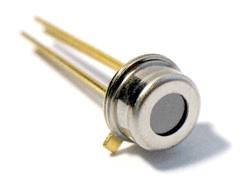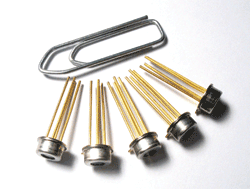The Ultimate Resource for Building Next-Generation Systems
SemiApps allows electronic design engineers to easily and quickly find product vendors who provide chipsets, application-focused ICs, customizable or programmable platforms, and specialized components for particular applications. New and interesting blogs from industry experts are featured on the site (www.semiapps.com).
Readers Choice: The best new application-specific ICs
The latest OLED display drivers from Dialog Semiconductor are among the most popular new products this month. Targeting low power displays, the drivers are said to be highly integrated and are manufactured with the company’s latest mixed-signal high-voltage CMOS process. The DA8622, for example, is a passive matrix OLED driver that supports resolutions up to 432 RGB x 240. It is shipped in bare die form with gold bumps, and has been designed for mounting as chip-on-flex or chip-on-glass.
A red semiconductor laser array from Sony has also attracted great interest from readers. The 635-nm laser array composed of 25 broad stripe lasers boasts optical output of 7.2 W, with the length of each laser bar 10 mm. The unit also features 23% energy conversion efficiency and operation within 25°C room temperature conditions. The optical features enable it to be incorporated in the design of projection systems. The laser bars are mounted on a copper heat sink block. Sony has achieved optimum uniformity within the laser active layer, high crystal purification levels, and high concentration of magnesium doping within the AlInP cladding layer to realize low-threshold currents and improved laser characteristics. With new die-bonding technologies for attaching the laser array and heat sink, Sony has enabled high levels of heat dissipation from the laser array. The optical features enable it to be incorporated in the design of projection systems.


Another popular IC is the MLX90615, ultrasmall infrared thermometer from Melexis. The noncontact thermometer delivers a fully calibrated digital temperature reading achieved by integrating an infrared sensor with a custom signal conditioning chip in a TO-46 package. The sensing element in the MLX90615 is a silicon chip with a thin, micromachined membrane heated by the infrared radiation of the object. A custom built signal conditioning chip amplifies and digitizes the minute voltages generated by the thermocouples on the sensor membrane and calculates the object temperature using factory set calibration parameters stored in the memory of the chip. The digitized temperature is fully linearized and compensates for ambient temperature. The high level of integration makes this thermometer very cost effective compared with previous infrared solutions. The MLX90615 applies advanced low noise amplifiers, a 16-bit ADC, and a DSP unit in its signal conditioning chip. This allows a wide operating temperature range of 40 to 85°C and an extended object temperature range of 40 to 115°C while maintaining a temperature resolution of 0.02°C. The MLX90615 has a high absolute accuracy of ±0.1°C in the critical temperature range of 36 to 39°C.
Engineering blogs of the month
Linear Technology’s Tony Armstrong has provided SemiApps with a very insightful look at the automotive market in China, specifically infotainment systems. This category can be broken down into five sub-categories: audio-only systems, front seat infotainment, rear seat infotainment, embedded navigation systems and emergency telematics. As a result, China is projected to have a worldwide market share of automotive infotainment systems a little over 10% by 2015, a sharp contrast to the 3% share in 2006.

At the same time, the automotive environment continues to be very harsh for any type of electronics. Wide operating voltage requirements coupled with large transient voltages and large temperature excursions combine to make life tough on electronic systems, and performance requirements continue to become even tougher. Also, multiple supply voltages are usually required for different portions of any system. A typical in-dash infotainment system can have six or more different supplies including 8.5, 5, 3.3, 2.5, 1.5, and 1.2 V. Moreover, as the number of components increases, space requirements continue to shrink. Armstrong sees this market as a significant opportunity for analog IC vendors.
Marty Gold
Advertisement
Learn more about Electronic Products Magazine





